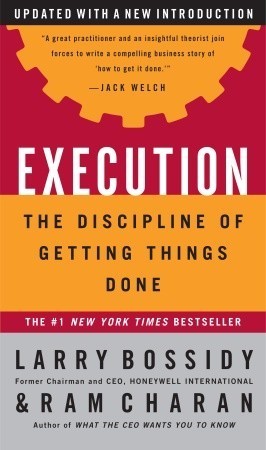More on this book
Community
Kindle Notes & Highlights
Read between
April 28 - June 18, 2020
Se...
This highlight has been truncated due to consecutive passage length restrictions.
ignore the capital investment ...
This highlight has been truncated due to consecutive passage length restrictions.
Finally,
go after megaprojects,
There’s the core of your robust people process.
the pluses:
he was technically savvy, he understood customer satisfaction, he was open to suggestions, he was creative, people liked the environment that he created,
The nega...
This highlight has been truncated due to consecutive passage length restrictions.
one, he wasn’t familiar enough with numbers and often fell sh...
This highlight has been truncated due to consecutive passage length restrictions.
he was not busines...
This highlight has been truncated due to consecutive passage length restrictions.
Three, he continued to need go...
This highlight has been truncated due to consecutive passage length restrictions.
everyone has unforeseen events that come along, and the people who ultimately succeed are those who overcome them.
His people feel he plays his cards too close to the vest.
hasn’t filled critical roles in operations fast enough,
is responsive, not proactive.
is close to burnout.
is more process- than results-oriented.
but doesn’t perform.
he isn’t dem...
This highlight has been truncated due to consecutive passage length restrictions.
he must temper his ego.
Nonperforming people are essentially those who aren’t meeting their established goals.
you have to let people go. But again you do it as constructively as you can.
We both made a mistake here.
First
Two, I’m not going to lie when someone asks me to recommend
I’m going to tell them you did some things wrong.
t...
This highlight has been truncated due to consecutive passage length restrictions.
find ways so you can hold...
This highlight has been truncated due to consecutive passage length restrictions.
Sometimes people recognize before you do that they aren’t up to a job.
HR has to be integrated into the business processes.
a good fit, a stretch, or an action required.
good fit,
we just stay on top and monitor h...
This highlight has been truncated due to consecutive passage length restrictions.
a str...
This highlight has been truncated due to consecutive passage length restrictions.
comfortable that he can deliver, but we might n...
This highlight has been truncated due to consecutive passage length restrictions.
action required,
needs to come out of that position and leave the company,
certain rules are needed: integrity, honesty, a common approach, common language, and frequency.
The answer is that we have a culture of accountability.
The people process begins with one-on-one assessments, but when developed and practiced as a total process, it becomes incredibly effective as an execution tool.
goal of any strategy is simple enough: to win the customer’s preference and create a sustainable competitive advantage, while leaving sufficient money on the table for shareholders.
a good strategic planning process also requires the utmost attention to the hows of executing the strategy.
How is your business positioned in the context of its business environment, including its market opportunities and threats, and its competitive advantages and disadvantages?
To have realism in your strategy you have to link it to your people process:
Michael Armstrong
as CEO
1...
This highlight has been truncated due to consecutive passage length restrictions.
The strategy that Armstrong shaped had four building blocks:
(1) buying cable companies, to gain direct, physical access to consumers; (2) providing customers with bundled service, which would let AT&T claim a larger share of their communications wallet than its rivals could; (3) executing the moves fast enough to generate revenue growth that would offset the decline in long-distance revenues; and (4) relying on regulatory implementation of the 1996 Telecommunications Act, which was supposed to block local telecoms from competing in long distance until they opened their networks fully to long-distance carriers.
What went wrong?


